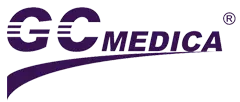-
Laparoscopic & Endoscopic Products
-
Laparoscopic Procedures
- Heated Insufflation Tube
- Laparoscopic Smoke Filter
- High FLow CO2 Laparoscopic Insufflation Filter Tube Set
- Veress Needle
- High Flow Heated Insufflation Tube
- Arthroscopy Irrigation Set
- Disposable Bladeless / Bladed Trocar with Thread / Balloon
- Disposable Wound Protector
- Disposable Height Changeable Wound Protector
- Retrieval Bag
- Laparoscopic Suction Irrigation Set
- Laparoscopic Insufflator
- Endoscopy Care and Accessories
-
Laparoscopic Procedures
- Respiratory & Anesthesia
- Cardiothoracic Surgery
- Gynaecology
-
Urology
- CathVantage™ Portable Hydrophilic Intermittent Catheter
-
Cysto/Bladder Irrigation Set
- M-easy Bladder Irrigation Set
- B-cylind Bladder Irrigation Set
- S-tur Bladder Irrigation Set
- S-uni Bladder Irrigation Set
- B-uro Bladder Irrigation Set
- Premi Bladder Irrigation Set
- J-pump Bladder Irrigation Set
- J-tur Bladder Irrigation Set
- H-pump Bladder Irrigation Set
- Sup-flow Bladder Irrigation Set
- Maple Irrigation Set
- Peony Irrigation Set
- Nelaton Catheter
- Urinary Drainage Bag
- Urinary Drainage Leg Bag
- Enema Kits
- Sitz Bath Kits
- Click Seal Specimen Container
- Silicone Male Catheter
- Spigot Catheter and Adaptor
- Sandalwood Irrigation Set
- Freesia Irrigation Set
- Daffodil Irrigation Set
- Single-Use Digital Flexible Ureteroscope
- Enteral Feeding Products
- Dental
- Fluid Management
- Warming Unit and Warming Blanket
-
Operating Room Necessities
- Nasal and Oral Sucker
- Disposable Medical Equipment Covers
- Magnetic Drape / Magnetic Instrument Mat
- Suction Handle
-
General Surgery
- Perfusion Atomizer System
- Gastric Sump Tube
- Surgical Hand Immobilizer / Lead Hand for Surgery
- Administration Set for Blood
- Ear/Ulcer Syringe
- Bulb Irrigation Syringe
- Toomey Irrigation Syringe
- Mixing Cannula
- Basin Liner/Basin Drape
- Medical Brush
- Sponge Stick
- Suture Retriever
- Needle Counter
- Disposable Calibration Tube
- Heparin Cap
- 100ML Bulb Irrigation Syringe
- Scleral Marker
- Surgical Light Handle
- Mucosal Atomization Device
- Durable Medical Equipment
- Patient Handling System
- PVC-FREE Medical Device
- Emergency
-
Patient Air Transfer Mattress Online WholesaleDec 17 , 2024
-
Cystoscopy Irrigation Set Online Wholesale | GCMEDICADec 17 , 2024
-
Patient Warming Device and Blanket Online wholesaleDec 16 , 2024
-
CathVantage™ Twist Intermittent Catheter | GCMEDICASep 20 , 2024
-
Single-Use Digital Flexible Ureteroscope | GCMEDICASep 20 , 2024
What is a Naso-intestinal Tube? What is the Role of the Nasointestinal Tube?
Enteral nutrition has already been known by public which plays an important role in gastrointestinal surgery. The requirement of nutritional support is not only to maintain the patient's body weight and other physiological index but also to maintain cell metabolism and the structure and function of tissues and organs.
Therefore, nasoenteric feeding tube is extremely key for the recovery of critical patients who cannot achieve the autonomic eating.
Introduction of Nasoenteric Feeding Tube
The nasoenteric feeding tube is also known as the duodenal feeding tube, a term that many are unfamiliar with. In fact, nasoenteric feeding tube is a medical device for enteral nutrition infusion through nasal feeding. Due to various reasons, there are many seriously ill patients who have lost the function of autonomic eating and the nasoenteric feeding tubebrings the possibility of food feeding to these patients.
Patients with cerebral hemorrhage, cerebral infarction and other brain diseases may have problems on swallowing function for various reasons, so it is necessary to use the nasoenteric feeding tube for intestinal nutrient replenishment. To patients of laryngeal cancer, coma, esophagus cancer and oral cavity operation who cannot take food through oral cavity or suffer dysphagia, can use nasoenteric feeding tube to undertake energy complement, in order to maintain the normal physiological activity of the patient.
Functions of Nasoenteric Feeding Tube
In general, nasoenteric feeding tube products are designed with a unique sealed connector base to ensure that the cavities do not interfere with each other. The design of each cavity conforms to the engineering philosophy to avoid the direct injury of the patient's gastrointestinal tract by right angle and effectively reduces the injury degree of the nasoenteric feeding tube to the human body in use.
Routine care of the nasoenteric feeding tube is to prevent it from becoming clogged. When the nasoenteric feeding tube is blocked, the blockage should be treated as soon as possible and the nasoenteric feeding tube should be flushed in time to ensure the recirculation rate. If the catheter cannot be dredged temporarily, please do not flush forcefully which easily lead to catheter fracture, resulting into more serious consequences. Warm water, low pressure or negative pressure suction can be used for alternate cleaning. At the same time, part of the outer tube can be repeatedly squeezed by finger pulp to eliminate blockage.
Generally, such products are made of medical grade TPU materials with good biocompatibility, resistance to gastric acid and good thermoplasticity. The nasoenteric feeding tube will soften slowly after insertion, which plays a very important role in reducing foreign body sensation and improving patient comfort.
The nasoenteric feeding tube can usually be flushed or filled with nutrient solution under direct observation. Because the head part of the nasoenteric feeding tube has been lubricated, it can be pulled out quickly, to a certain extent, to avoid scraping the mucosa and skin by the tube.

